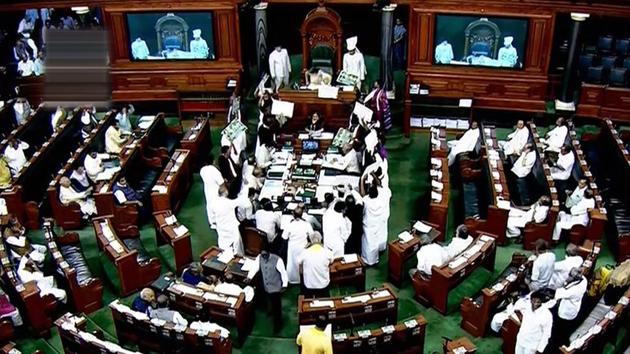Political consensus, amendments hold key to simultaneous elections
The Law Commission of India has recommending doing away with the no-confidence motion which can curtail the term of the House.
The Law Commission of India has given stakeholders, including political parties, till May 8 to send in their comments on holding simultaneous elections to the Lok Sabha and all state assemblies. Here is a look at the debate and the controversies on the issue:

The issue
The Law Commission of India, which is examining a proposal to hold simultaneous elections to the Lok Sabha and state assemblies, has called for feedback on the matter. The panel, the top advisory body to the government and the courts on legal affairs and legislation, has thrown open the debate on the issue by inviting all stakeholders, including political parties, to respond in about three weeks’ time.
Significance
The National Democratic Alliance (NDA) government led by Prime Minister Narendra Modi is keen on simultaneous elections to avoid frequent invocation of the model code of conduct, which it perceives as an impediment in carrying out development work, and the expenditure that holding multiple assembly elections every year entails. It asked the Election Commission for its opinion in 2015. The commission’s view was that the concept is desirable, but not practical unless a number of steps are taken.
These include changes in the law and procurement of enough electronic voting machines, staff and logistics support. There is political opposition on grounds that it is a step towards excessive centralisation and curtailing or increasing the terms of assemblies to synchronise their elections with the Lok Sabha would be undemocratic.
The debate
In 1999, the Law Commission, in its 170th Report on Reform of Electoral Laws, recommended simultaneous elections to the Lok Sabha and state legislative assemblies . The parliamentary standing committee on personnel, public grievances, law and justice, in 2015, also recommended an alternative and practicable method of holding simultaneous elections. In January 2017, NITI Aayog released a discussion paper after Prime Minister Narendra Modi reignited the debate after coming to power.
The chief argument in favour of holding simultaneous polls is the adverse impact of multiple elections on development programmes and governance because of the frequent imposition of the Model Code of Conduct. Every year, India holds five to eight assembly elections. NITI Aayog said between March 2014 and May 2016, the code of conduct was in operation for a period of 12 months.
A less significant argument is the cost of elections borne by the state exchequer. The Aayog’s paper also argued that frequent elections mean keeping security forces deployed on election duty for prolonged periods .
But the other view is simultaneous elections interfere with the federal structure and ignore the fact that governments do not always run their full term. They also call it anti-democratic.
The Law Commission’s working draft on holding simultaneous elections suggests that states in which elections are to be held till 2021 can go to the polls along with the Lok Sabha in 2019 and the rest can be clubbed together with the next general election. However, the commission’s draft on related constitutional and legal issues has listed sweeping changes that will be required to be put in place.
The Constitution and the Representation of the People Act, 1951 will have to be amended to extend the assembly terms that are ending before the 2024 general election. The anti-defection law will have to be done away with to allow legislators to defy the party whip. The commission has also recommending doing away with the no-confidence motion which can curtail the term of the House.
The law panel’s working draft also suggests that the constitutional amendment will have to be ratified by a majority of the states so that it cannot be challenged. With a special majority needed in Parliament to carry through the changes, political consensus will be needed for the government to move ahead towards simultaneous polls.






